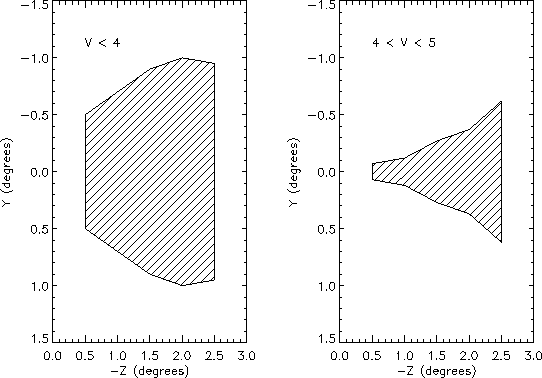Next: 3.4.6.2 RGS flux to count rate conversion Up: 3.4.6 RGS specific proposal submission information Previous: 3.4.6 RGS specific proposal submission information
Visual light from bright sources can enter the RGS under certain angles, as displayed in Fig. 89. To prevent contamination of RGS observations, such sources must be avoided.
Observers should be always aware of the potential for what would otherwise be unexpected and unwelcome contributions to their RGS data from other sources that happen to lie along the dispersion axis. The diffraction equation will be satisfied for objects even quite far away in this direction, including those outside the EPIC field-of-view, giving a flux on the RGS CCDs further determined by telescope vignetting. For example, for calibration purposes the brightest source in the sky, Sco X-1, was observed on one occasion 40 arcminutes from the nominal pointing position in order to move light of a particular wavelength onto another CCD. The density of bright X-ray sources is low enough for problems of this type to be extremely rare. In any case, they may be avoided by a judicious choice of position angle.
The choice of position angle is entirely at the responsibility of the Guest Observer. Should an observation become too constrained due to these avoidance angles, GOs may consider violating these regions, depending on the scientific impact on their proposal.
 |
European Space Agency - XMM-Newton Science Operations Centre